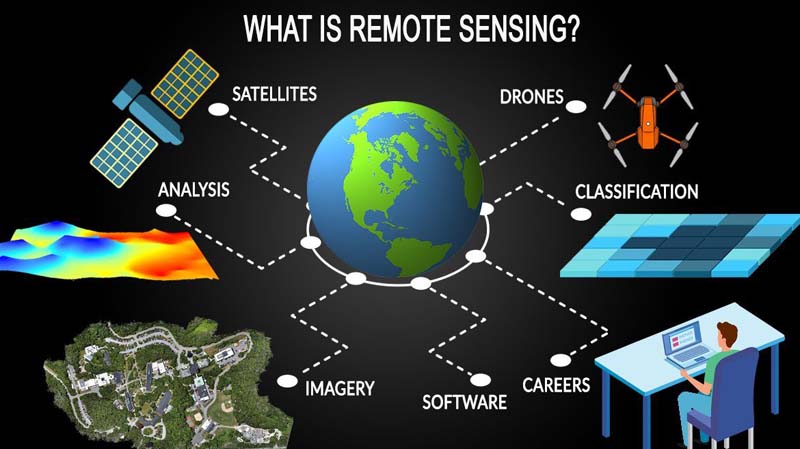
Remote sensing technology is considered to use for obtaining data about the surface of the earth and to examine its physical features. It utilizes reflected and emitted light from the aircraft and satellites without the requirement for physical contact with the area of the surface under investigation.
The remote sensing industry is primarily boosted by the growing number of earth observation ventures by various space-related organizations. For example, the Indian Space Research Organization (ISRO) has 13 satellites related to earth observation to date and it intends to introduce 10 earth observation satellites during the years 2020-2021.
The portion of active remote sensing is assumed to be the significant holder of the revenue share of the industry. This type of technology is considered to radiate its very own light to monitor and analyze the qualities of the surface. Active remote sensing is known to defeat the demerits of passive remote sensing i.e. this cannot be utilized to examine qualities of the surface during the night. The innovation of active remote sensing is widely used for assessing the structure of the forest, ice, and ocean surface topography.
The portion of passive remote sensing has been holding the largest share of revenue of the industry. The innovation of passive remote sensing is known to calculate the reflected sunlight from the world’s surface to monitor and investigate the features of the surface. Passive remote sensing is considered to provide top-quality images from satellites and therefore is extensively used for numerous earth observation applications.
The military and intelligence segment holds a major revenue share of this industry. This is because of the fact that rising acceptance and adoption of technology by emerged countries to screen and avert criminal and other negative activities. Additionally, nations, for example, China and Russia are concentrating on utilizing images from satellites for defense applications. All these factors are considered to fuel the demand for remote sensing technology in the upcoming years.
The disaster management segment has been holding a significant share of revenue of the industry. The innovation can provide significant information associated with natural disasters, for example, storm and volcano eruptions. The availability of constantly refreshed information assists authorities with taking better decisions associated with evacuations and initiatives to be taken after the disaster.
These days, there is extensive use of a drone or Unmanned Aerial Vehicle (UAV) in aerial mapping. This makes the aerial systems segment a significant holder of the revenue share of the industry. The use of drones in examining fields decreases the expenses and assists with collecting data at a rapid rate. Additionally, surface mapping over these tools give highly accurate data and examine the area that cannot be analyzed over satellites.
There has been a rising earth observation projects by significant space organizations such as NASA. Moreover, growing acceptance of images based on satellite for the forecasting of weather is another component which is anticipated to boost the demand for remote sensing technology in the next few years. Meteorological satellites can calculate the winds near the surface of the sea from space, which is very useful for locating and monitoring cyclones.
Remote sensing is useful in acquiring data from the earth's surface and it has applications in multiple fields. The remote sensing technology can be divided into two types viz. active remote sensing and passive remote sensing. Remote sensing technology finds its applications in various fields such as military and intelligence, disaster management, aerial systems, and satellites, etc.
Moreover, there are some advantages and disadvantages of remote sensing technology. The Global Remote Sensing Technology Market size is expected to rise at a market growth of 9.8% CAGR during the forecast period.